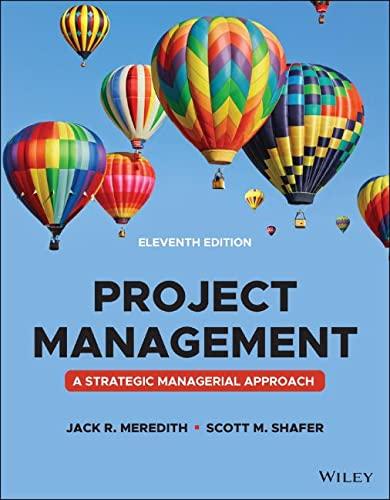Question
In October 2017, the Competition Bureau confirm that it was investigating price-fixing of bread products and raided the offices of several grocery stores, including Loblaw,
In October 2017, the Competition Bureau confirm that it was investigating price-fixing of bread products and raided the offices of several grocery stores, including Loblaw, which had alerted the Bureau to the practice in 2015. It was alleged that the price of bread had been coordinated amongst the bakeries and retail stores.
The Bureau states that price-fixing conspiracies are difficult to detect and prove. Penalties for price-fixing include fines up to $25 million, imprisonment to a maximum term of 14 years, or both. (Source: "Price-fixing," Competition Bureau Canada athttps://www.competitionbureau.gc.ca/eic/site/cb-bc.nsf/eng/h_00112.html).
The possible price-fixing disclosure and investigation began in 2015. Loblaw and Weston Foods revealed their involvement in the price-fixing arrangement from 2001 to 2015 to the Competition Bureau. They had been cooperating with the Bureau since discovering the anti-competitive behaviour in March 2015. In January 2016, the Canadian Federation of Independent Grocers contacted the Competition Bureau about the possibility of price-fixing in the industry. The matter was being fully investigated but under competition legislation, the companies were required to keep their cooperation confidential. Loblaw and George Weston had been granted immunity from criminal prosecution because they voluntarily disclosed the possible price-fixing arrangement.
Between 2002 and 2014, bread prices increased an average of 5.25 percent per year while the food inflation rate averaged 2.57 percent. Canada Bread Co. Ltd. and Weston Foods produced 8- percent of packaged bread in Canada, making the possibility of cartel arrangements easier. Besides Loblaw, the other retailers alleged to be involved were Walmart Canada, Sobeys Inc., Metro Inc., and Giant Tiger Stores.
In a media release on December 19, 2017, entitled "George Weston and Loblaw take action to address industry-wide anti-competitive activity" Loblaw and George Weston outlined the issue, the action they had taken to address it and admitted that it should never had occurred. As a result of internal investigations, the employees involved were no longer with the companies. An enhanced compliance program had been implemented. A new independent compliance office led by a Chief Compliance Officer was established to ensure competition law compliance. All sales and marketing personnel, store managers, and senior management at Weston Bakeries, George Weston, and Loblaw had undergone intensive compliance re-training with continuing updates and monitoring taking place. Also, the companies committed to an ISO 19600 competition compliance program certification to provide independent third-party validation. Loblaw also announced that it was offering customers a $25 Loblaw Card. This goodwill gesture was not requested by the Competition Bureau.
Please answer the questions below:
1. How did Loblaw attempt to influence civil society stakeholders? Do you think their approaches were socially responsible? Please explain. 2. How should journalists use media releases? 3. Why should business leaders worry about media as a stakeholder? Please describe the influence of the media.
4. Is this an example of "libel chill"? Why or why not?
5. Should other stakeholders participate in this situation? Please discuss.
Step by Step Solution
There are 3 Steps involved in it
Step: 1

Get Instant Access to Expert-Tailored Solutions
See step-by-step solutions with expert insights and AI powered tools for academic success
Step: 2

Step: 3

Ace Your Homework with AI
Get the answers you need in no time with our AI-driven, step-by-step assistance
Get Started


